
 |

The East Village’s newest gallery is also it’s smallest and possibly most ingenious. A mere 4 by 14 feet, The Stand occupies a former beer storage shed perched on the side of a bodega on the corner of East 7th Street and Avenue C. The gallery is the creation of Lori Der Hagopian and represents a culmination of a long-crafted vision to exhibit art in a direct, accessible manner.
The art presented also is of a radically inclusive nature. Der Hagopian is a champion of the outsider and the underrepresented. Works of homeless artists and children are placed side by side with those of the occasional established professional in a way that highlights the common denominator of focused intention and deep personal investment.
Open to the street, jutting out into the sidewalk, the space offers a welcome invitation to all passersby, generating clientele of a diversity that few galleries could hope to match.
Check it out.
At Occupy Lincoln Center Philip Glass mic-checks Satyagraha's final lines after the close of the Opera's run. The text from the Bhagavad-Gita:
"When righteousness withers away and evil rules the land, we come into being, age after age, and take visible shape, and move, a man among men, for the protection of good, thrusting back evil and setting virtue on her seat again."
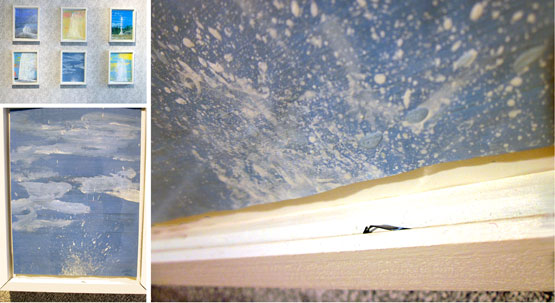
During the opening for Superheated Reservoirs: Geysers and Fingertraps, the painting Geyser #22 was accidentally knocked from the wall. The result was a small, uncannily ideal crack in the glass. The object can now read as if the painted geyser – the force within the image itself – ignited the rupture.
This incident put me in mind of Marcel Duchamp’s The Bride Stripped Bare by Her Bachelors, Even, whose glass famously broke. Unlike Duchamp, I won’t have to dedicate two months to reconstituting the shards. Like Duchamp, though, the imposition of an outside, random occurrence has delivered the work to conclusive resolution. Now - it is complete.
Superheated Reservoirs: Geysers and Fingertraps an exhibition of works by Mark Roth and Aaron Cardella continues at The Phatory through March 27, Saturdays and Sundays 1-8:00.
Inhabitat spends most of the year envisioning a well-designed green future and last night's party – at Green Spaces, Manhattan – was a pure celebration of that pursuit. Congratulations to Jill Fehrenbacher and the team.
Tinsquo appreciates Inhabitat’s recognition that beauty sustains spirit.
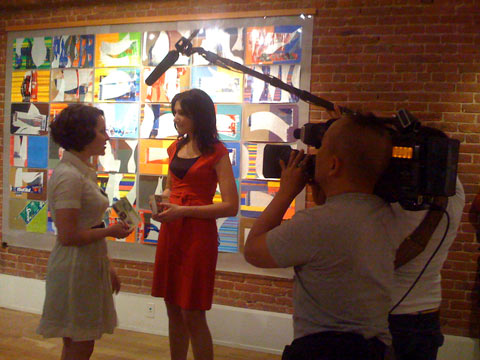
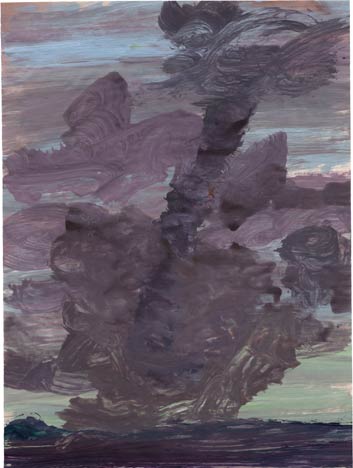
“Serpent's_#43” represents an inflection point in the continuing Tornado Series. Up to now I’ve been intentionally working without visual referent – operating exclusively from memory or preconception.
It seemed a worthy exercise – an irreproducible luxury – to scan the mental database and see what my personal encoded tornado icon looks like – at least to date.
With this painting, though, I’ve taken to painting from external observation: The web is replete with powerful, experiential video of tornadoes. I think of working in accompaniment to these videos as mediated en plein air painting.
For some weeks now, some of you have been asking, “Where has TINSQUO gone?”
Today, if you’ll permit me a moment of meta, I’ll explain the recent absence of posts:
In an alleged effort to improve efficiency and security, my webhost upgraded its server to a new platform and, in the process, eradicated my ability to post...anything…for over ten weeks.
From the start TINSQUO has been dedicated to tracking the forward edge of studio activity – the idea being that the overarching process of an artist’s evolution is a work in and of itself.
Since we launched in 2003, I’ve gone light on including too much in the way of my quotidian biography because 1. I figure it’s necessarily represented in the work and 2. Biographical information can be an obscuring illusion that precludes a viewer’s opportunity to approach each work as a primary experience of one’s own perception.
But I would like to express my gratitude to all those who reached out to see if I was OK. Thank you. I am moved. Fortunately, I did not fall off the face of the earth – just the digital version of it. The reason why is quotidian in the extreme.
The technical explanation for this disruption – as far as I can gather – is that they relocated the MySQL database to a remote server and, for a long time, were unable to adjust my Movable Type blogging software to account for this new reality. Fortunately, I was an indefatigable squeaky wheel and – despite being told point blank that such a thing was impossible – eventually obtained the necessary fix.
In the interval, work on the oil painting Joan of Arc Riding My Little Pony moves forward. Presently all the elements are in place at a preliminary level of finish.
Also, for mysterious reasons the YouTube video of Canyon Ascent embarked on a rapid acquisition of new viewers – on average about 500 a day for 9 days or so. Thereby garnering the dubious distinction of being targeted by the infamous swarms of YouTube haters. (Now, in response, there is a sort of “kindness backlash” underway. The forces of light and darkness battling it out on a YouTube message board).
Finally, in some inchoate way I’m getting the sense that this unplanned digital holiday will turn out to be a blessing – a disruption of the status quo. I don’t know yet what I mean by this, but going forward: “Welcome to TINSQUO Version 3.0.
(Why 3.0? In the dusty prehistoric blogging epoch of 2002 I launched the first iteration of what would become the current TINSQUO. Little remains of this ancestor which was parked at the proto-trendy super long domain of THEREISNOSTATUSQUO.com. A few choice relics persist on this site though in the Thank You Project and Thread Of Remembrance.)
Tinsquo’s fourth year commenced with a commissioned Canyon Ascent by Burro Train for this "migratory painter". Toeing the rim of the Grand Canyon, experience reconfirmed that an active canvas affords a promontory view.
The eye’s journey across a canvas is a pilgrimage. There is a correspondence between moving down into the canyon and moving up the face of the canvas.
Though material, much of a painting’s compelling presence is derived from the abstract principles it triggers in the mind. In the canyon works these include the notions of geomimicry as painting strategy and the seeming paradox of growing down as the means of elevation.
Along the way I modeled some “druidy_derby_couture,” retrofitted one-time rejects, saw some succumb to the indefatigable patience of gravity, delighted to the fulfilled artistry coursing through our freshest observers and found gratification when, after long contemplation, the Pop Stoppages fell into place.
In terms of the “coming attraction” recent weeks have been consumed with preliminary sketches and preparatory studies for the painting that will become Joan Of Arc Riding My Little Pony. Currently there is paint on the canvas and, in short order, the first process video will join its brethren on YouTube.
All my best to those of you who’ve written, commented and viewed tinsquo with interest on this anniversary of its past four years. Thanks. As to the future I say: tell me something I don’t know, “yet”.
Art first entered my life in the form of a trading card – a medium I’d already been primed to value on account of the baseball card precedent.
There’s no telling what trigger will set the course of a young life.
Basically, that’s why I created TINSQUO and love the web. Each post casts forth a message-in-a-bottle whose receipt may surreptitiously inspire the unsuspecting. Some of this blog’s missives have reached the shores of people googling curiosities like “whipstall,” “garland” and, most frequently, “epitaph.”
Parker Brother’s Masterpiece was my “epitaph.” Stumbling across the exotic and seemingly adult art-crime boardgame in the Penquite's basement next door revealed card after card of paintings from the Art Institute of Chicago. The images were a world apart from anything my newly minted eyes had encountered. I remember most vividly a Picasso synthetic cubist painting that was the farthest afield image I’d seen. It set a marker on the horizon – a marker towards which I would set my course. It turns out, I was not alone in this experience.
Today, the trading card - this art scaled for the hand – finds fresh invigoration courtesy of artist Brendan deVallance’s trading card-sized magazine, “Scraping Chunks from the Roof of My Skull.” It’s a true biopsy of one artist’s mind.
In the 1980s, deVallance founded the legendary P-Form magazine and was a prolific figure in the extraordinarily vital Chicago performance art scene. More recently, Brendan has stepped up to fulfill a role as historian of this artistic efflorescence.
He is still going strong. His diverse pursuits: music, printmaking… vacuum cleaner documentation are perusable at his treasure trove repository, Spoolf Cough-Up. There, in this warren of a website, you can treat yourself to a nostalgic trip back to the 80s Chicago performance scene with his extensive list of the era’s contributors.
The list features archival material and links to those artists who have a web presence. You’re also invited to offer your own memories or material. DeVallance’s archive may be a Masterpiece Game-in-the-making for some unsuspecting web surfer and is fun for those of us who were there.
Critic and New Yorker staff writer, Joan Acocella has a newly published collection of essays: Twenty-Eight Artists And Two Saints.
Kathryn Harrison, elegantly reviewing the book for the New York Times, writes:
“Acocella is interested in artistic careers that include break and recovery, and how the work changes in the wake of trauma, including the chronic, compounding trauma of rejection.”
What got my attention - and verifies my own experience of a life devoted to painting - was Acocella’s observation, “What allows genius to flower is not neurosis but its opposite ... ordinary Sunday-school virtues such as tenacity and above all the ability to survive disappointment.”
Lest you think I’m putting myself in presumptuous company with the word genius, consider this: “genius” is an anagram for “genus I” - the unique species of one’s self.
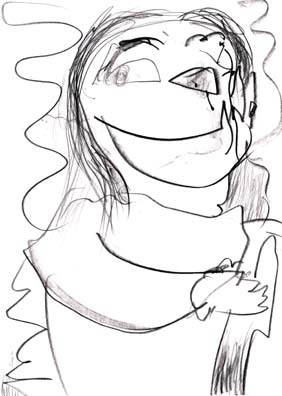
Yes, yes, yes! Happy Bloomsday. Today marks the 102nd anniversary of the day recounted in James Joyce’s Ulysses.
In celebration of spirited reverie, enjoy this episode of the syndicated radio show “To the Best of Our Knowledge.” It elucidates the pragmatic power of optimism. The program features Rob Brezny prescribing “pronoia” and presents Danny Wallace, a man who has elevated Molly Bloom's soliloquy to a strategy for successful, event-full living: he just says “Yes.”
Once, a cohort and I set out on an enormous quest - a journey that entailed aspiring to encounter an Okapi in its domain - in wild nature. With little but wits and trust, we pursued a course for the Virunga Mountains straddling Uganda, Rwanda and the former Zaire, rising in the heart of Africa. Nothing was left in reserve.
That was 1993.
In the wilds of the internet today, that quest was realized - and in no small way; the noble creature has returned from apparent extinction to make it so.
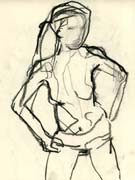 |
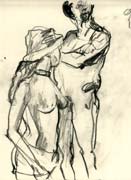 |
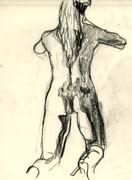 |
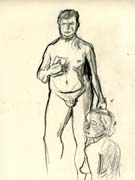 |
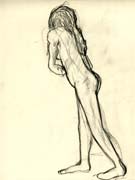 |
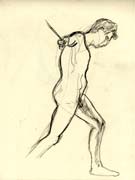 |
 |
 |
Sometimes it’s good to reacquaint with the basics. So today - the second anniversary TINSQUO's launch - I find myself posting sketches from the first live model figure drawing I’ve done in years and assessing what’s transpired on the site in the past twelve months.
The occasion for figure sketching was December’s Draw-a-thon at Fix in Williamsburg.
“In a strange way I noticed that it purified the experience of my eye and I would make drawings of my own for years to come.”
Reading that earlier in the week from Bob Dylan‘s autobiography, Chronicles Volume One, seemed a trigger to assess the world with eyes that do not presuppose.
In my quest to continue to refine the presentation of an artist’s process as an appreciable work in and of itself, several new permutations have evolved since this time last year:
The institution of Process Posts offer unedited glimpses into the exploration of certain themes or forms. “Latenight Paintings” was one of my favorites, as was “Pack Mentality.”
In August the site commenced the What It Takes (WIT) series. Spearheaded by editor Janna Olson, the interview series is an investigation into how different artists working in various media construct their lives to facilitate creative pursuit. Thriftshop Theatre Workshop founder Gina DeMayo was the inaugural installment. In October’s edition, Jazz musician Jenny Scheinman provided another particularly generous glimpse into her approach.
October also saw the completion of an oil, “Goya Moment.” With this painting the fractal concept of the site (outlined on the newly revamped about page) fulfilled its envisioning. Digital stop-action distilled the many months that went into creating this painting into a single minute (viewable via QT at 8.5MB).
Posts of note:
• The Year In Palettes offers a scrollable snapshot of a year in the life of my acrylic palette in calendar form. (Look for the 2005 version the first week of January).
• The post generating the highest traffic day for TINSQUO this year was on July 28th. Titled “Everybody I Know,” it acknowledges the day that the official number of American military fatalities in Iraq equaled the total number of people I think I’ve met to date in the course of my lifetime. Since then the number of dead has significantly exceeded the totality of my acquaintanceships.
• A Horse With No Name coupled a Hawai'i photo essay with a story I continue to fancy.
• The post Barnaby Furnas generated a lot of foot traffic. Literally. During the weeks that Furnas’ painting “Apocalypse” hung in the Lever House lobby, search engines delivered scores of people to this brief essay on the powerful piece. New Yorkers (and I’m sure a few tourists) googled their artistic curiosity until the painting vanished from its Park Avenue lobby, taking the traffic in tow.
• Julian Schnabel Is A Laughing Matter unmasked the painter/director’s incisive bit of performance art in Sydney Pollock’s documentary, “Sketches Of Frank Gehry.”
Like most artists, I like my most recent work the best. Nonetheless, my fondness remains unabated for the painting “custodian weave” and the drawing “whipstall wherewithall.” For a while, the title “flush_truckee_strandee” became a popular country jingle in our household. (Feel free to croon your own tune.)
All In All, the sophomore jinx has been averted. I’ll continue seeking to “purify the experience of my eyes” and look forward to TINSQUO’s third year in 2006. Thanks for your many e-mails and viewership. The new oil is underway and its first stop-action installment will post soon.
Every time Julian Schnabel’s image appeared on screen at the New York premiere of Sydney Pollack’s documentary, Sketches Of Frank Gehry, the audience’s decorum surrendered to laughing derision and disapproving groans...of palpable intensity. This became, for me, the most intriguing part of a fascinating evening with the director.
The jeers were quite a disjunct, ripping through the awed atmosphere at the Apple Store, Soho. Such vitriol for a man whose offense, such as it is, is having once broken some plates and, without irony or embarrassment, painted on their shards.
Pollack’s film, a clear labor of love among friends, is a moving and joyous explication of Gehry’s process. Featuring interviews with the architect, contemporaries, critics and most notably Gehry’s long-time therapist, the legendary Milton Wexler, Schnabel is an integral figure in the mix. Appearing only three times, he contributes what may well be the funniest, most incisive comment of the lot - which is saying something.
But it wasn’t Schnabel’s commentary that provoked the audience’s reaction. Reclining with brandy snifter in hand, wearing dark shades and a plush white bathrobe, Schnabel performs in his own tableau as an artist of grand, unapologetic self-expression.
Yet, Gehry’s architecture does something similar. For his part, the architect speaks of a compelling application of Democracy.
In a moving passage of the film, he explicitly addresses the democratic impulse undergirding the execution of his designs. “The nature of Democracy is chaotic,” he posits, adding hopefully:
“and that chaos, we’re starting to feel, is beautiful.”
Like structurally sound castles in air, every inch of a Gehry building resonates with consideration, transmitting residuals of the architect’s focused attention. Nothing is dismissible, every part is valued, even celebrated.
The uncowed, flamboyant Schnabel-figure that so exercised attendees at Friday’s event functions in a manner comparable to Gehry’s work - but more brashly, less abstract. Schnabel’s refusal to be shamed registers as a challenge to the viewer. His audacious expression prompts the thought; “If I allow my own ‘inner-Schnabel’ full license, might not chaos ensue?”
...and might it not be a beautiful chaos?
Pollack shared, in Q & A after the screening, that one of the lessons learned from his first documentary in over forty years of filmmaking is that documentaries are made in the editing room. But his handling of the Schnabel material betrays his uncategorical cinematic mastery.
Schnabel’s hilariously triumphant line (If you’re unconcerned by a spoiler, click here for the quip) is the last thing the painter/director says in the film. And with it, all the tutting and tisks are silenced, replaced by avalanching guffaws that make the previously baffling suddenly seem self-evident. So concludes Schnabel’s bit of walk-on performance art.
A cautionary voice may counter that unbridled self-expression fails to account for the artist’s social responsibility and is akin to mere self-gratification.
For this, consider what Gehry’s therapist, Milton Wexler, offers from his decades helping people access their purpose and unleash their own unique ‘inner-Schnabel:’
“[When most people come to see me, they want to know how to fix their relationships, improve their careers, how to heal the pain from their early life, in a nutshell, how to change their lives.]
”When an artist comes to see me, he wants to know how to change the world.”
Which raises the question, artist or not, is there any course of action that doesn’t change the world?
“Sketches Of Frank Gehry” is slated to appear on PBS’s American Masters in September 2006.
Jimmie Dale Gilmore cautioned us that the late set of an evening can be “weird" last night at Joe’s Pub. He then, happily, went about proving himself prescient.
When the curtains parted for his "Come On Back” CD release party, he ascended to the stage looking spectral. Several years since I’d heard that inimitable voice directly, I felt strangely nervous. He approached the microphone delicately, breathing lyrics as if setting something carefully on a shelf.
So it began.
He launched into a CD sampler of his father’s favorite songs from the new release. Listening, I felt him sift for clues to any wisdom he’d been blind to in younger years, maybe still unsure it was ever there.
About the sweeping intensity of these times, he mused on maturity: “Is it weirder than it used to be or am I just getting more observant?”
Three generations of Gilmores are present on this tour: Jimmie, his son Colin (both opening the show and accompanying on guitar) and the guiding spirit of a deceased patriarch. What his dad “loved more than... anything” lives on, prompting Jimmie to observe that “songs last longer than we do.”
In a native trickster mood, Jimmie paraphrased a complex Bertrand Russell quote with - “There’s no way to prove the universe wasn’t created five minutes ago, complete with memories.”
Each song - interpreted by Gilmore’s placeless echo - floated amidst this wry calm.
I guess I can’t predict how long I’ll remember Tuesday’s concert, but I know I’ll never forget it.
While walking down Park Avenue yesterday, I was stopped in my tracks by the Apocalypse.
More precisely, I was riveted in place by "Apocalypse,” the immense (12’ x 28’) Barnaby Furnas painting currently inhabiting the lobby of the Lever House.
In its scale and subject, the work echoes Anselm Kiefer’s charred history landscapes. Unlike the German master, though, Furnas’s painting is reportage - not elegy - and very American.
The triumphs of heraldic New York School painting resonate on this canvas with the pathos of a dream once dreamed, then deferred and now turned nightmarish. The transcendent “zips” of Barnett Newman turn sinister, delivering blows at their termini and trails of burning phosphorus glowing in their wake. Paint splatters register as messy, explosive incidents of sacrificed bodily integrity. A sea of red roils, beings writhe and souls depart.
It is an all-over painting of video-game grade mayhem dressed up in acrid red, white and blue.
As I lingered before Furnas’s 2005 painting, I noticed that the trauma wrought by its imagery steadily ebbed. In its place rose a dawning perception of the innate beauty of a painter passionately at work. Probably, that’s what actually grabbed my attention in the first place.
Even the image of the Apocalypse won't survive the Apocalypse. Everything is always at stake. Furnas’s painting seems a pre-emptive act of beauty aimed to ward off terminal indifference. So it is with every artist who accepts custodianship of the visions in their trust.
On Thursday, October 20th, Barnaby Furnas will give a free Artist Talk at NYU’s Steinhardt School of Education.
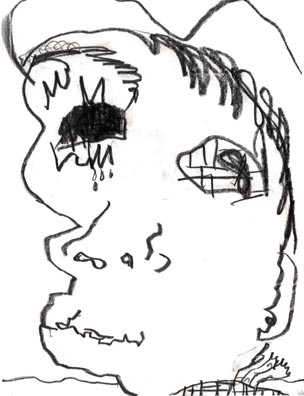
Today, I became a small gaggle. Fascinated by a team of painters adding final touches to the huge recreation of Alex Katz’s “Give Me Tomorrow” on B Bar’s garden wall, I’d stopped in my tracks.
Soon, five people joined me. It was pedestrian rubbernecking in the name of art. Eventually, an inquisitive fellow admirer asked one of the four painters “what was the hardest part?”
The answer came, “Climbing from the ladder to the lift,” and I thought: Apt, a painting is a field of unified attention. If the image is resolved then there isn’t going to be a hard part.
Plus, he got a laugh.
You can see it at E. 4th and Bowery. Billboards featuring the work of Gary Hume and Lisa Sanditz are also part of this project.
On Friday’s Democracy Now, Amy Goodman rounded out the broadcast by retrieving a gem from the Pacifica Radio archives:
In May of 1962, the legendary folksinger Bob Dylan came by the WBAI studios in New York to perform his rarely heard tribute to Emmett Till. This is one of the earliest known live recordings of Bob Dylan.
It was recorded within days of his 21st birthday. "The Ballad of Emmett Till" never appeared on an official Bob Dylan record and was only released on a compilation put out by Broadside Records (on which Dylan recorded under the pseudonym Blind Boy Grunt).
You can hear it here.
This is but a foretaste of the Dylan rarities soon heading our way. On September 26 and 27, PBS will broadcast the Martin Scorsese directed Dylan biography “No Direction Home,” focusing on the singer-songwriter’s life and music from 1961-1966.
This will be preceded by the release of the soundtrack this Tuesday. Volume 7 of the Bootleg Series, the new two-CD set features - among many other previously unreleased tracks - what is believed to be Dylan’s earliest recorded original song: "When I Got Troubles” from 1959.
Given the gathering storm of our present moment in history, it seems a ripe time to revisit the emergence of the force that is Bob Dylan. As always, The Bard’s timing remains uncanny.
In the fine print of today’s news, I happened across a number that had a strange familiarity. Mulling this current number of Americans killed in Iraq, it hit me with a sudden shock that this number - 1788 - corresponds precisely to the number of people I’ve been able to document knowing during the course of my entire lifetime.
So here’s a thought experiment for the heart: imagine a world absent of absolutely every friend, family member and acquaintance you’ve ever known. Everyone is integral to the whole. We might be a neighbor to one person, a co-worker to another, maybe a teacher, a parent or simply a peculiar curiosity. But no one is dismissible.
I am a collaboration - the sum total of my experience. Subtract my first grade teacher from the equation and I become someone else. Change the waiter who gave me a tip on where to camp on Mount Desert Island and my catalogue of peak experiences reads differently.
That is what is happening in Iraq - and elsewhere - millions of life equations are being recalibrated. The impact only appears diffuse.
The Thank You Project is my attempt to enumerate the inenumerable, to acknowledge with gratitude everyone who has made everything I know possible. The idea is to prompt reflection on the myriad defining connections that constitute a life. It’s quite a monolith to scroll, even for a so-called recluse.
Sunday evening, I was in a gang fight.
My date and I were walking East along Stanton, past Clinton at dusk, when a group of about ten guys came barreling riotously in our direction. Turns out they were in momentary flight from the verbal bombardments of their rivals further down the block.
They swirled around us as if we were stones amidst their surging rapids.
“Hey, there’s Sin-e bar. Maybe we should check it out,” said my companion.” “Oh, OK.”
So we strode into no-man’s land between rival factions. Deploying taunts and hollers, swarming combatants periodically flooded the intersection, engulfing our stationary presence as we mulled the bar’s prospects:
“Hey, there’s a pool table...”
“And a guitar player.”
“Hmmm...”
“I don’t know, can we talk with the music?”
Coexisting, disparate, internally coherent realities.
While this scene bore the trappings of multiple invading hordes, there was no hoarding involved. In fact, when it came to the big topics of Time and Space, we were all most definately sharing.
Amidst the throngs of enthusiastic patrons to the recently concluded Jean-Michel Basquiat Retrospective at Brooklyn's Museum of Art, I overheard the following reaction to the artist's work:
"This guy was doing some serious voodooing."
Succeeded by the further explanation:
"It's like Creole - he throws everything together in a pot and it comes out just right."
Basquiat's retrospective now travels to the Museum of Contemporary Art in Los Angeles and then to the Museum of Fine Arts, Houston. For some digital gumbo check out Street to Studio - the exhibit's companion website offering a raft of compelling images and info.
The Studio Museum in Harlem is hosting the revealing exhibition of a previously unknown body of work from the artist, Chris Ofili (the same artist a certain Mayor of New York infamously railed against for "The Holy Virgin Mary," a painting that featured elephant dung).
The NYTimes:
For 10 years now, Mr. Ofili has been making watercolors, each about 91⁄2 by 61⁄2 inches and produced in a single sitting. Predominantly heads of men and women, as well as some studies of flowers and birds, they are his way of unlocking ideas that may eventually become full-blown paintings.
He makes these intimate, resolved paintings as part of his preparatory routine nearly everyday. This is one blog-ready artist.
 |
 |
 |
 |
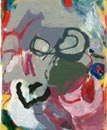 |
Picasso is said to have explained that he’d sometimes leave a painting unfinished and set the canvas aside in the corner of the studio. Weeks, months or even years later, he’d uncover that canvas to discover, lo and behold, it had magically resolved itself on its own.
Today’s post is an illustration of the point.
For more than a few years (I’d guess seven), the above paintings have been “flattening” between the pages of a hefty Random House dictionary in the corner of my studio. Each was housed there with the intention of continuing at some future moment. Yet, that moment never arrived. Upon discovering one after the other this week, I realized they had brought themselves to conclusion on their own.
The mechanism driving this bit of aesthetic alchemy is probably multifold. Even if they aren’t masterpieces, they do stand as unreproducible relics of a lost painter. The doors to that former self now closed, these works retroactively connect-the-dots to subsequent evolution.
Call it the aesthetics of compassion - increased self acceptance on the part of the painter leads to a tempering of the hypercritical eye. Could Picasso’s tale have been a wink and nod at the availability of maturation as another tool at the artist’s disposal?
Wednesday night, 60 Minutes aired an expose of 4 year old painting prodigy, Marla Olmstead's uncanny channeling of 1950's New York School painting styles. The focus of the program was whether or not young Marla actually is the painting genius her parents and gallerist claim or whether her canvases are the product of her father's hand, either in total or in collaboration.
The program enlists Ellen Winner, a psychologist who has studied gifted children and specializes in visual arts. Upon seeing a videotape of Marla at work, Winner said, "This is eye-opening to me to see her painting because she isn't doing anything that a normal kid wouldn't do. She's just kind of slowly pushing the paint around. I expected to see a child feverishly and intensively working at her canvas and filling up space.
Marla may not be a prodigy but she's still, like all children, a genius.
Whether or not she actually painted the works attributed to her, I have no idea. To me, the point of interest is that the parameters in which Marla paints are radically different from that of most four year olds:
First, she works on canvas, with apparently high quality paint that must be prepared for her. Second, she receives coaching in what one hopes is a playful exchange with Dad. Third, she is encouraged to work on the same image in multiple sessions and for protracted periods of time. One wonders what "non-prodigy" children could produce under similar circumstances.
A resolved work by a preschooler is quite the revelation. Prodigy or no, geniuses all.
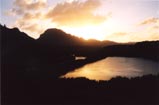 |
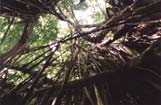 |
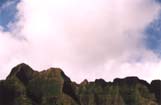 |
 |
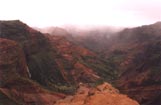 |
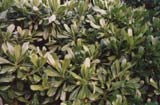 |
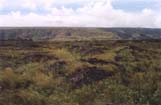 |
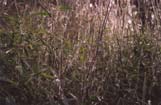 |
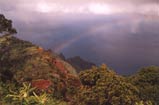 |
Last month, I was wending my way through the grocery aisle when the store’s piped music broke into the familiar opening strums of “A Horse With No Name” by the 70’s folk group America. I quickly reckoned that this same occurrence could be happening in countless, random convenience stops across the country.
It’s just that this one was in a town called Kailua on the island of Oahu...in Hawai’i.
As for many, the song triggers deep memories - delivering me to an ancient time when, curled beneath the covers, I scanned the radio dial for distant stations and news of life beyond the Corn Belt. In the night, an AM radio signal can travel hundreds of miles across the country’s plains. “A Horse With No Name” was a frequent missive.
The journey - free roaming, liberated from language - in joint company with the nameless horse always sang of an Eden that exists over the horizon, beneath one’s feet, somewhere out in America’s mythic Wild West.
Standing in that Hawaiian grocery aisle, I realized I had traveled to a place beyond reach of the nameless horse and even further than the narrator’s imagination could carry him. At the checkout line, after a journey of nine days, the singer was letting the horse run free “cause the desert had turned to sea.”
To my young, landlocked ears this logic had been unassailable. The horse and rider had arrived at the watery edge of the knowable universe and so the trip, and with it the song, comes to a close.
Yet, there they were, riding through the desert on the remotest archipelago on earth. That bodega at that moment seemed beyond reach of even the strongest AM radio signal in the deep of the night.
Hawai'i is like that. One arrives with that confident certainty of what constitutes The World only to learn that in a place where the newest earth in all creation issues forth, there is no knowable universe only “plants and birds and rocks and things.”
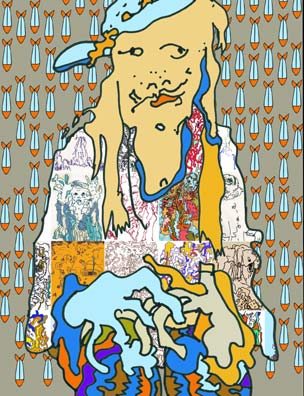
Yup, today it's official.
In an eerie foreshadowing of this Simpsons episode, political cartoonist and Dayton hometown hero, Mike Peters, once addressed the entire student body of my high school. He made three points that have stuck with me: The first, how to draw a quick, evocative caricature of Nixon (still useful); Second, the ladder of success for a political cartoonist consists of one rung - getting hired by a newspaper as their resident editorial cartoonist. It's the equivalent of winning an Oscar and day one on the job IS the pinnacle of success. Third, to syndicate a daily comic, one has to have six weeks' worth of strips in order to prove the sustainability of the idea.
This last point was much on my mind when I first envisioned tinsquo. Launching the site a year ago today, I had in reserve at least a years' worth of possible daily entries. My biggest fear was a prolonged dry patch leading to the all too frequent blog fate: interminable hiatus.
In practice, the site has lived up to my most optimistic hopes, serving not as a burden but as an instigator of more consistent productivity and risk taking. So far, I've never had to dip into the backlog and the site has been an accurate reflection of the forward edge of my investigation or as the "oh so official" about page puts it: an open ended, realtime performance of one painter's process.
There is an aphorism among artists that their most recent work is their favorite. I'm no different in this regard. Today, however, seems an appropriate moment for a quick recap of tinsquo's freshmen highlights.
Pictured above is the work that started it all, "studio assistant," the long sought computer composition that triggered emotional and aesthetic responses comparable to that of a traditional (paint) painting. I completed it on Easter day, April 20, 2003. For some of the other digitally constructed paintings that remain close to my heart for the breakthroughs they represent see: "compunctuated equilibrium," "tacit approval," "the industrial twilight" and "secondleg_xenograft."
The ongoing body of work I call "magazine paintings" began the year as abstractions and ended it populated by personages of origins unknown (even to me) melding with their environment. See: "death_glimpse_howdy," "beside_racket_court," "poor-revenuer" and "general_gimcrackery_paralysis."
On election day, the site received a huge spike in traffic but, like many people, I felt speechless for days. I posted "returning wounded (study)," a painting, several weeks in the making, that was pulled to resolution by the tenor of the moment as if by a strange attractor.
The site received its highest traffic of 2004 upon the posting of "Show and Share, Part 2." This collaborative project with a class of four and five year olds was a major thrill. I hope to undertake similar projects in the future. (If you find yourself inclined and in a position to make said happen, by all means, let's talk).
On a frigid night in January, monologuist, Spalding Gray, went missing. A longtime inspiration, I did my best to do honor to his memory in this piece.
April 24 represented the 100th anniversary of Willem de Kooning's birth. The Gagosian gallery celebrated the event with a spectacular museum quality exhibition. In a life wherein I've spent literally hundreds of hours looking at his paintings, the occasion inspired me to draw together the myriad thoughts I'd long been germinating about the great painter's controversial late work.
The passing of Titans demanded an homage to Titans-in-the-making: John Currin at the Whitney.
All in all, a pretty good inaugural year at tinsquo.
The public projects slated for 2005 are just as collaborator-friendly as "Show and Share" but bold beyond a sophomore's tone. I plan to expand the video offerings and have several major projects in my sights. So, if epic iteration of an organic nature, virtual memorials spanning the scope of human history or NYC Sphinxs far beyond Macy's Parade scale excite you, drop me a line to see if you'd enjoy contributing to the process.
As a final note: Last week at a dinner party I was revealed as a blogger. This prompted another guest to recoil in mock horror quizzing, "you'd admit that before God and Man?"
What could I say? That's the only way to do it.
One hundred years ago, today, Stephen Dedalus did not awake to gaze upon the grey sweet mother of the Irish Sea from the Martello Tower’s parapet. Nor did Leopold Bloom close out an idiosyncratic, run-of-the-mill day curled up head to toe beside his wife, Molly, as her mind swirled with recollections and wonder over the ancient currents of passion that delivered her to the moment. Yet, of all the fictional anniversaries routinely celebrated, none is as resiliently real as that of June 16, 1904: the fictional "Bloomsday."
An incidence of the word made flesh, James Joyce's "Ulysses" tracks the movements of Leopold Bloom and a host of other characters through the course of an otherwise unremarkable day save for the attention afforded it. In so doing, Joyce recasts the ordinary person in the role of Odysseus and finds in the travails of daily life a mythically resonant Odyssey to rival that of Homer.
The precision, poetry and expansiveness of Joyce's writing is such that the world described in "Ulysses" takes on the aura of fact. So much so that, today, we celebrate a centennial of fictional happenings. But for Joyce, the date also held a real world significance for it marks the day he met his future wife, Nora Barnacle. Among the many, many things "Ulysses" is, it might also be regarded as a lasting memorial to the arrival of love.
In the nine decades since its publishing, "Ulysses" has consistently come to readers as a blessing of love, prompting each who delve into its indelible pages to find the myth-worthy truths of their own exalted ordinariness. This is the revelation that continues to draw people to "Ulysses" and, indeed, all of Joyce's work.
For me, the fiction of "Ulysses" and the reality of my life first intersected early in a summer of my late teens. With a stack of reference books scoured from area libraries, I set up my Joyce reading station on a card table in our Ohio basement. For that initial attempt, beside the furnace long into Fall, my comprehension was as dim as the candlelight by which - for romantic purposes - I read.
A couple of years later, I gave it another go. My friend, the poet Philip Norton, and I spent a summer getting full mileage out of our CTA monthly passes, riding and walking around Chicago reading the story of Stephen, Leopold and Molly aloud to each other. In the spirit of Bloomsday that year we fried up some kidney for breakfast. We managed to burn it without even trying.
Subsequently, enthusiasm and fate conspired to land me in Dublin. There, I rented a room for several months with the intention of studying at The Joyce Institute while experiencing first hand the real world referents of Joyce's fiction.
My first visit to the weekly reading group of the Institute turned out to be an auspicious occasion. Like a literary opportunist, I had unwittingly walked in to the concluding session of the group's four and a half year long reading of "Finnegans Wake." Despite my being something of a party crasher, I was treated with traditional Irish kindness and, oddly, even deference.
This latter response was explained afterwards when the man seated next to me - a person clearly given to Joycean heights of observation and obsession - presumed me to be a certain renowned Joycean scholar. I confessed my humble status but he insisted on verification by pulling out a thick, three-ring binder bursting with years' worth of news clippings concerning the comings and goings of various Joyce enthusiasts and reading groups throughout the Irish isle. The gentleman searched for, found and pointed to a particular newspaper photo of a gathering of Joycean scholars. I could not deny that the back of my head did bear an uncanny resemblance to that of the ponytailed scholar in the picture.
"Finnegans Wake," the work to which Joyce devoted 17 years of his life, is the aesthetic heir to "Ulysses." In it, Joyce brings to full fruition the innovative structure and word play he forged in that earlier novel. The Dublin reading group to which I was a (very) late participant plumbed the depths of "Finnegans Wake" by reading syllable by syllable, taking time to explore the etymology of each letter grouping across a variety of languages. Every venture to the dictionary then opened further paths of associative investigation to far flung sources, not the least of which was the varied life experience of the roomful of readers.
“Ulysses” and, especially, "Finnegans Wake" are progenitors of the concept now popularly known as "six degrees of separation" - that idea whereby through acquaintanceship any two persons on earth are separated by no more than six people. Yet, Joyce elevates even this awesome notion. By creating books designed to send the reader back out into the world, Joyce constructed, despite their reputation, the ultimate un-hermetic works of fiction. The reader finds in his or her hands linguistic treasure maps with which one can conceivably be set on a course to discover any given flicker of consciousness that has at any time made its appearance in the world.
The awareness Joyce inhabited and advocated has now been made manifest in the world at large. Our's has become a world of Joycean fiction. The proper heir to his life's work might well be the instrument allowing you to read these words right now: the internet. Like Molly Bloom following her passion, pursuing links on the web can potentially deliver one to virtually any thought anybody has ever had - such as this one, here. How rapturously ordinary.
Happy Bloomsday.
The painter Willem de Kooning is known to have drawn visual sustenance from late night jaunts through the city. For an immigrant from Holland - he arrived as a stowaway in 1926 - the streets of New York, even during the Depression, were a fertile riot of billboards, pinups and errant papers underfoot.
On a recent evening, I was in a similar mindset of heightened visual receptivity. Walking across the breadth of Manhattan, I was heading to the Gagosian Gallery in Chelsea for the opening of a retrospective of de Kooning’s work organized in celebration of what would have been the artist’s 100th birthday.
The proliferation of concocted imagery that confronts a pedestrian today is multiplied many fold from the days de Kooning scoped this cityscape. From decals on fruit to video monitors in restroom stalls, advertising continues to breach new bulkheads of both visual and mind space.
In the interstices of this mediated visual field persists the resilient efflorescence of graffiti. Like antimatter to advertising's charge, graffiti innovates counterstrategies designed to frustrate attempts at its eradication.
In moving through the city, graffiti and sanctioned media operate in conjunction as the equivalent of figure and ground. Depending on one’s perspective, the city and all its mediated imagery might read as the backdrop or “ground” upon which the populace expresses itself in the idiom known as graffiti.
Alternatively, instead of being the “figure,” the city’s graffiti might recede from visual awareness into the background as simply part of the environment. The equal valuing of figure and ground might be called the unified field theory.
De Kooning’s work of the late 1940s pursued precisely this endeavor. His black and white abstractions - jostling interplays of figure and ground where shapes and lines share duties in each role - would long ago have been stilled as icons representing the attainment of this quest if they weren’t so successfully protean. This, of course, is the point.
Save for a gem of a small gallery packed with these historical benchmark paintings, the Gagosian show focuses on the work de Kooning made following his move from the city to the far reaches of Long Island. (This means the installation does not contain examples of the very early abstractions or figure paintings, nor any of the one-time infamous Woman paintings upon which much of his reputation was forged).
In the early 1960s, de Kooning made the transition from being an inveterate urbanite to living in the rural setting of The Springs, East Hampton. There, in a landscape not dissimilar to his native Holland, he designed for himself a studio. Close to the ocean and set amongst the scrub oaks, the building has become famous the world over as a sort of ideal, an example of architecture flowing from the nature of an artist’s discipline.
Gagosian’s Chelsea gallery, with its open space, generous proportions, exposed ceiling trusses and bright, diffused natural light is not a far aesthetic remove from de Kooning’s Hampton studio. As such, this exhibition allows the paintings to be seen in an environment comparable to that in which they were created - with the paintings standing in as the views out the studio windows.
Many institutions have come together to create this show. There are masterpieces aplenty documenting the consistent high points of de Kooning’s painting evolution through the 1960s and 70s. But it is the room of paintings from the 1980s that is the irresistible draw. Especially, it is the inclusion of four paintings (only one of which has been previously exhibited} from 1988 that reward any viewer’s sojourn - no matter how arduous.
For a painter who resided within and propelled the vanguard of artistic practice for over 50 years, the capstone to his expression turns out to be paintings comprised of expansive, looping lines floating in space that are close to indistinguishable in look and purpose from the graffiti “tags,” “burners” and “throw-ups” that adorn the surfaces of the city - indeed probably even the outside walls of the very gallery within which these paintings now hang.
From the cusp of the 1980s, de Kooning’s work underwent a significant transformation. Gone were the knotted whorls of thick, sensual paint that had been a hallmark of his work since at least the mid-1940s. Prior to 1980, the preponderance of de Kooning’s work offers a tactile world across its surface. In some of its extremes, this sensual tangibility can be as familiar as your own body and as consuming as quicksand.
The space embodied in all of his works is experienced as a vast, internally coherent landscape that is awash in light - great, bright, sharp light. The paintings of the late 1970s represent the apogee of these tendencies. With their clotted, curdled, dripping surfaces, these works form a topographical tour de force.
It was in the wake of this period’s baroque, sensual verisimilitude that de Kooning shifted gears and began creating painted surfaces as smooth and wet as the surface of your eye. The change shifts his work from a depictive and literal texture to an optical tactility.
Hued lines in high-keys skim and wend across the white space and surface. The contrast packs an ocular supercharge. A phantom image burns, to varying degrees, into the retina and joins the eye’s gaze as it moves across the painting’s surface. In these works, de Kooning wields memory as a vital tool alongside his brushes - both long term and fleetingly short, both his and that of the viewer.
The movement of the painter’s hand bears tracings of the material world. The lines are armatures of perceptual experience, a mark scattering into a multitude of readings, all of which are unassailable in their veracity.
Present through a lifetime of painting remains the specificity of flesh, beach and studio accouterments. Even things that would seem immune to graphic representation - save for the evidence before one’s eyes - find their place: a precise light or time of day, an experience of a particular bodily orientation in the landscape, even vulnerability and the unquestioning quest. Present, too, is the view from before the canvas, within the glass and steel, light-filled studio of its origin.
In the ‘80s, it is as if de Kooning wanted to make it harder on himself by making it easier on himself. Surrendering to the tender impulse at the heart of his image-making pursuit, the late paintings feel like the works of a painter who - absent of artifice and unwarranted labor - is engaged in laying bare the genetic blueprint of the mysterious painting of his imagining that long ago compelled him to take up a brush and embark.
Perhaps entangled in this tender impulse are the seeds of commonality between de Kooning and the graffiti artists whose work his own came to resemble.
The eye of the painting master sees the world with a studied eclipse of preconception that mirrors the inherently inclusive, uncensoring eye of youth. As a young man de Kooning worked as a sign painter. It was the sign painter’s thin brush with its extra-long bristles that enabled him to draw whip-like strokes that flayed and narrowed in a way not far removed from how a “writer” employs a spray can.
De Kooning, working on Long Island in a sort of palace of the artistic ideal - a workplace where the valuing of art built unto itself a shrine for its own furtherance - shares sympathy with an inner-city youth art tradition so condemned that it is circumscribed with issues of legality. Despite differences of age, access and environment, de Kooning and an urban graffiti practitioner meet in a comparable visual milieu. Television, advertising, signage, photography and the line or letter that issues forth from a gesture comprise a pervasive visual fact. If you really are reflective of the environment, then mass-media distillation is going to occur.
Throughout his career, de Kooning used the complexities and difficulties of his life to formulate strategies to frustrate his facility and, in so doing, break new ground. Representative of this practice might be the period of the late 1960s and early 1970s, when - as viewed through the lens of biography - his work is often discounted as arising from a haze of alcohol.
This work could just as easily be seen as finding a frisson in the making and using of incoherence as an organizing principle or goal. The irony, of course, is that the eye can’t perceive incoherence. That’s a function of a certain quarter of the mind and is easily trumped by the reality pouring in through the eyes. It’s a challenge that asks: Is there such a thing as a bad painting? The answer might be “yes,” but only if one set out to make a “good” painting.
De Kooning in the 1980s certainly faced an unusual complexity and difficulty: he was succumbing to Alzheimer's disease. Diagnosed in 1989, he continued to paint until early 1990. It remains an ongoing debate as to which works can confidently be regarded as reflecting his conscious intent. The first great survey of this work - organized jointly by SFMOMA and the Walker Art Center in 1995 - included works up to 1987. With this current show the canon is being stretched to embrace works from 1988.
For all the variety, the numerous series, pursuits and periods, that comprise de Kooning’s work of the 1980s, no leap is as dramatic as that of 1988. Indeed, it appears that - true to form - de Kooning was using his last imaginative energies to venture forth into yet another uncharted mode.
In some analyses this new manner is attributed in large part to the undue influence of new studio assistants who introduced to his palette an array of complementary and pastel colors. If so, it wouldn’t be the first time de Kooning had his palette dictated by external factors. The extreme reduction of his palette in the late 1940s was enforced by poverty. The triumphant black and white abstractions were his response to that particular environmental determinant.
The controversy that swirls around de Kooning’s work during the final years of his productivity highlights the vexing nature of Alzheimer's itself - a disease which seems to cloud not only the mind of the sufferer but also, in this case, the mind of the viewer. The knowledge of Alzheimer's impedes direct perception in a way analogous to how questions of legality muddle the perception of graffiti.
We may well be heading to a place where compassion, rather than some notion of aesthetic valuation, may render the entirety of his production worthy of the canon and our attention and care, regardless of possible neurological impairment. For a master painter of light, a final contribution of his legacy might be the introduction of a different sunshine: that of transparency and full disclosure.
A transparency before our eyes would see in the graffiti on the walls, light poles, delivery trucks, street signs, phone booths, train windows, sidewalks and mailboxes the visual fact of art popping forth through every channel and think, now there’s some painting for ya.
A culture investing in perceiving what’s right before its eyes will acknowledge and revere the most committed visual artists in our midst.
Free of all questions, the paintings de Kooning created under the encroaching darkness stand as inviolable visual facts. His painterly tenacity in the face of peril is an act of advocacy on behalf of self-expression. In the end, de Kooning is in league with the anonymous graffiti writer who by virtue of existence alone assumes his or her own validity. Who can argue with that?
Each month Harper’s magazine offers a fascinating read with a feature they call the “Harper’s Index.” The Index is a page’s worth of single sentence numerical revelations that succinctly paint a portrait of our world with carefully chosen - and sometimes obscurely novel - facts.
The March edition of the Index contained this gem: “Estimated percentage of television static that derives from the Big Bang: 1.” (Source: NASA)
So, if tonight you should join the millions upon millions of people who’ll tune in to see if Rachel and Ross finally get it together, whether Monica and Chandler at last become adoptive parents and how Matt LeBlanc’s Joey character is going to be positioned for next season’s spin-off and find your TV beset by some quirks of reception, consider that in the errant crackles and flickers that may flash across your screen reside evidence of an alternative program for which there is no alternative: the Initial Flaring Forth, the Big Bang.
Perhaps regard the buzz of static - 1% of which more accurately represents our nature than even the Friends who’ve kept us company lo these many years - as an occasion to play a drinking (in of the cosmos) game.
On the most temperate day the season has offered thus far, the sidewalks of the city were dense with people flashing smiles and glimpses of too long covered flesh gratefully receiving the sun's warmth after the Winter's slog. It was a welcome weekend urban bacchanalia to counter the traumas of the headlines and small print.
While walking, I found an open bench on the perimeter of a playground on Chrystie Street. There I could lean into the sun and work in my sketchbook. At one point - I was a bit slow on the uptake - I realized I had company. Four boys had called a halt to their game of tag to investigate the stranger in their midst. They had been watching me draw for a while. Speaking as a unified entity they, in turn, asked questions and quickly surmised their own answers.
"What's that? It's a girl. Snaaaaap! What's that? A mouth. It's ugly. No it's not. Snap! Do you have more? Oh, snaaaap! Snap! Are you an artist? Snaap!..."
Flipping through the sketchbook, the boys' excitement rose as their intrepretive facility in reading the drawings' vocabulary grew more confident. The chorus of snaps escalated in frequency and boldness.
A consensus developed that, as an "artist," my skills would be well employed in the service of drawing a motorcycle, and then a car. Part party-trick and part command performance of the highest order, I set to the task with lightening speed. The emergence of each recognizable detail was accompanied by exclamations of its identification. In the seconds when it was decided that the car should be generously festooned with flames, every line of fire drawn brought forth instantaneous approvals of "Snap!" and the satisfaction that comes with having one's vision made manifest.
This is the motorcycle. This is the car.
Several of you have inquired about the March 1 entry, “February’s Palettes.”
As is usually the case in these matters, I don't know exactly the origin of this idea for the palettes’ inclusion. But it has been on my mind all the way back to the beginning of my pursuit to engage the internet as a medium. I’ve always liked to make lists and look at information in schematic formats i.e., graphs. "February's Palettes" satisfies that predilection, offering visual gratification that communicates statistical information.
Since the palette is usually hidden from view, only the artist gets to see the organic formations that develop there. A painter's palette is, however, a talisman - something whose presence exercises a remarkable or powerful influence on human feelings or actions. Tinsquo is dedicated to revealing the artistic practice as the art itself - hence it makes sense to include the palettes.
It came as a frigid gust, the news that monologist Spalding Gray was missing and the worst presumed. In mid-January his family filed an official report. He was suffering mightily from depression and the lingering aftereffects of a terrible car crash. The best guess proffered by family and friends is that on the evening of January 10, he leapt off the Staten Island Ferry into the ice clogged waters of New York Harbor.
According to those close to him, he had long been fixated with suicide. His own mother committed suicide at the age of 52 giving him cause to think he, too, would be similarly fated. A possible prior attempt had been foiled in September when alerted police on the Staten Island Ferry intervened.
Spalding Gray first broke into broad public awareness in 1987 with the theatrical release of the film, "Swimming to Cambodia," directed by Jonathan Demme. An uncommon film, it was a documentation of one of the monologues that Gray had been developing and performing for years to enthusiastic Lower Manhattan audiences. The film featured nothing but Gray alone on a stage sitting behind a desk talking.
“Swimming To Cambodia” was received as a revelation. People were astonished that they liked it. The notion of watching a head talk for 90 minutes seemed antithetical to having a good time and yet it proved rousing, deep and accessible.
What was immediately shocking about “Swimming” was what was most obvious about it - that it was simply a man speaking in the first person about the events of his life. Stripped down, no frills, yet rich and complete, the film and Spalding Gray’s voice demonstrated the case that one’s story is THE story - that that’s what we have in common.
Those practiced in advertising say it’s necessary to put a brand or a name before a person seven times before they will be able to retain it and fourteen times before they will recall it without prompting. But, in the narrative of MY story, I know I remember the very first time I heard the name Spalding Gray.
I had just walked off the stage having finished a six minute monologue of my own - a walking, talking, off-balance jangle of an extemporaneous jag - and was feeling swells of uncertainty. It was 1986 - still prior to the film’s release - and I was in a performance art class at the School of the Art Institute of Chicago.
Though I’d enrolled in school as a painter, the vagaries of a “Time-Arts” curriculum requirement had suddenly thrust me on stage before audiences telling tales. Up to that point in my young life, I hadn’t found it all that necessary to speak much.
During the post performance critique of that six minute monologue, I was mortified, debilitated with feelings of apology. A quick calculation and I determined that fifteen people multiplied by six minutes equals a full hour and a half of collective living - ninety irretrievable minutes - spent attending to what I said and did.
The professor assured me that a six minute performance is not a defacto indulgence. That’s when he said, ”I saw Spalding Gray deliver a two hour monologue at the Goodman Theater and, believe me, the duration was immaterial. It’s not too long if it’s brilliant.”
That little moment sent me thinking differently.
By the following year, when “Swimming to Cambodia” was released, I‘d become regularly engaged in my own bit of storytelling, delivering monologues on the stages of the lively Chicago performance scene. To my lights, Gray did something similar for the poets, performance artists and all-purpose storytellers of the era as Jackson Pollock did for the painters of 1950's New York: He broke through.
Here was no pundit, this was a talking head with credibility, demonstrating - in convincing fashion - that one’s life is both the medium and the message.
The Spalding Gray of “Swimming to Cambodia” (and great prior and subsequent monologues) contributed in no small way to the enlivenment of the communal spoken word event. Tracing the genealogy of influence would be a quantum physics calculation, but it would seem safe to figure that both the performers and the audiences who supported such events at that time were freshly familiar with the thrill of Demme’s movie. It gave a contemporary context with which to create and perceive such work. It’s effects continue to this day.
The Poetry Slam form, now an international phenomenon, was propelled at the start by at least some significant assistance courtesy of the breakthrough example of Gray speaking his truth. Just after the release of “Swimming” and thanks to the vision of Marc Smith, the Green Mill bar in Chicago’s Uptown hosted the first poetry slam in the Summer of 1987. People from all sorts of circumstances and perspectives got together to tell each other carefully wrought stories of their discoveries to date - all with a bit of sports ritual thrown in for happy irony and challenge.
At this time, too, Rap - another discipline, like monology, that places primacy and veracity on the voice of the individual - was in fast ferment, continuing its inexorable assumption of cultural heft. The Performance Poetry that evolved from the slams was, among other things, an organic counterpart to the ongoing innovative frontiers rap was opening. Sitting behind his desk, talking, Spalding Gray was rapping like only a self-aware New England WASP could.
Solo performance - lone artists constructing and inhabiting characters as a means to storytell - also benefitted from Gray’s impact. Thanks to “Swimming to Cambodia,” Eric Bogossian, David Cale, Anna Deavere Smith, and John Legiuzamo (to name but a few prominent figures) have practiced their work in a landscape graced with a heightened predisposition toward valuing the spoken word.
It should also be noted that “Swimming,” despite being told in the first person, exuded merely the guise of narcissism while simultaneously telling the story of US involvement in Cambodia, the rise of the Khmer Rouge and the country’s subsequent descent into Hell.
The individual brings specificity to the collective. Gray’s personal experience serving, here, as a conduit for the human epic. Sad evidence of the apparently timeless nature of “Swimming” appears in today’s headlines where, just this week, the New York Times ran a story revealing that professionals are being targeted and assassinated in Iraq - an eery parrallel to the behavior of the Khmer Rouge in Cambodia. So far, it is estimated between 500 and 1000 professionals and intellectuals have been murdered.
I never knew Spalding Gray, though once enlightened to his endeavor, I sought out his work. I saw him perform live four times, read his books, and watched the body of his work on the videos archived at the Lincoln Center Library. But I never spoke with him, knew him only in the context of the art he made.
Once, a few years ago in the summer twilight, I was sitting on a bench at the Columbus Circle entrance to Central Park when I glanced up and saw Spalding across the plaza walking in my direction. He strode in an unmistakable beeline right toward me - there was no other apparent destination to his trajectory. I figured this must be the moment our two monologues intersect. With about two steps before he would have crashed into the bench and fallen onto me, he abruptly pivoted on his heels, turned at a right angle and proceeded into the green of the park. Art as life.
As my professor once said, “It’s not too long if it’s brilliant.” In Spalding’s case, though, it would seem it can be too short.
On the January night of Gray’s disappearance, news reports indicate a troubled man resembling Gray’s description was spotted on the Staten Island Ferry. Final confirmation of his demise - if it comes at all - may have to wait until Spring when, in a grim ritual of nature, the bodies of those drowned in the harbor during the preceding Winter rise to the surface.
Whether Gray is still among us - having chosen to radically rewrite his story - or if, indeed, his monologue has gone silent, his reasons and intentions are beyond presumption. Perhaps though, it may be safe to say, that - whatever his purposes that cold night - they remain as unique and universal as his performances and legacy.
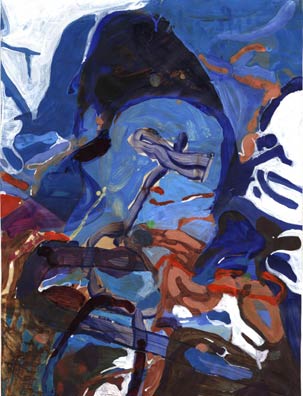
"gently_jib"
Two stories from today's New York Times hint at the possibility that someday the distinction between art and science will prove as capricious and past-tense as the Ingres/Delacroix line-versus-color battle or the Modernist abstraction-versus-realism debate:
Physicists discover/conjure/perceive new elements:
(F)or roughly half a century, nuclear scientists have been searching for an elusive "island of stability," somewhere among the superheavies, in which long-lived elements with new chemical properties might exist. Dr. Loveland said that the new results indicated that scientists might be closing in on that island."We're sort of in the shoals of the island of stability," said Dr. Kenton J. Moody, a Livermore nuclear physicist who was one of the experimenters in the work.
"It's an amazing effect," he added. "We're really just chipping away at the edges of it."
-snip-
"This is a working piece of art," Dr. Patin said. "We're not done yet. Nothing's been finished. What it could really mean down the road, nobody can tell. And that's the part that's exciting to me."
In a periodic table of another sort, artist Vincent Desiderio, with exhaustive thoroughness and care, paints the elements of six centuries of Western art. The Times' article contains the following contemplation-worthy notion:
Of all the illustrations, (Desiderio) found (the) Picasso portrait, "Leaning Woman" (1939), the most difficult image to reproduce because "Picasso's marks are so aggressively counter-intuitive."
Scientist/Artist...how anything ever got bifurcated in the first place is what I find counter-intuitive.
On the occasion of the Museum of Modern Art’s great Jackson Pollock retrospective in 1998, I recall reading a particular review of the exhibit in one of the local papers. Suitably in awe of Pollock’s accomplishment, the reviewer led us through the rooms of the show. For many at the time, the final gallery of works was a cause of ill-ease, sadness and disappointment. Coming after the towering breakthrough of the drip paintings and the powerful black and white figurative paintings that followed, the works in the last room of the show appeared to some as disparate, tangential and flailing.
The reviewer in question was among those who found the conclusion to the show, and Pollock’s oeuvre, wanting. The writer said, in essence, that the probable trajectory of this painter's work was easy to imagine. He/she then proceeded to envision the unlived remainder of Pollock’s career - going so far as to describe precise (imagined) paintings complete with names for different (imagined) series'. This writer’s conjectured future for the artist undermined the credibility of the previous (actual) work and, ultimately, implied that Pollock’s premature death was a sort of blessing in that it spared us from having to look at a lot of lousy late-career paintings and spared him from becoming a parody of himself.
Concocting a future for a unique artistic genius is, of course, rampant and a fool’s mission.
It’s possible that, had Pollock not wrapped that car around a tree, he might have had a breakthrough to rival the drip paintings. Unimaginable, to be sure, but no more improbable than the emergence of the drip paintings in the first place - a development that no one could have predicted. They only seem self-evident post their physical manifestation.
With the above story as a cautionary tale, John Currin’s mid-career survey at the Whitney - perhaps because it represents the tantalizing beginning of a life’s work - got me thinking about where he might take us and his work. In contradistinction to the above author’s imagining of a future body of Pollock’s work, Currin’s future of my imagining would seem rife with possibilities that may recast everything we suppose about his present undertaking.
Currin’s work-to-date is predicated on the notion that, in fact, a reactionary approach can be the more progressive strategy. Painting in a highly accomplished realist manner is the reactionary part of the equation. When it comes to the progressive side of the calculation, though, Currin hasn’t shown his cards.
Despite a reputation that characterizes his work as intentionally vulgar, misogynistic or kitschy, what Currin seems most intent to do is reassure. The quality of his paintings register as an objective fact. They are uncommonly well painted, undeniably “good” paintings. To put it bluntly, nobody walks away from a Currin painting saying “my kid could do that.” Or, to employ a metaphor frequently used with Currin: How can the emperor have no clothes if they’re painted so well and I can, in fact, see them with my own eyes?
In an age given to cynicism and overload, this assurance of quality is an experience in rare supply. Its appearance comes as a kind of relief; aesthetic resistance falls. With the viewer’s judgment suspended by this assurance, the painting is perceived, allowing image and content to come to the fore. One of Currin’s great accomplishments is that his paintings have found an opening.
Building upon the strategy of providing reassurance through satisfying reactionary yearnings, Currin makes academic paintings catered to the moment. With a nod to the canon, his works draw their sources from the visual imagery in which the culture is fluent - that is to say the academy of our time - hence, the indebtedness to pinups, porn, fashion magazines and Rockwell inspired illustration and sentimentality.
The people who populate Currin’s paintings are from what one might call the collector class. Like the academic painters of old, he is explicitly appealing to the taste of his audience by (symbolically) painting his patrons. True to tradition, he does this, in effect, by holding up a mirror. This strategy sets up the vexing and indelicate question, “Is getting everything you want the definition of crap?”
In "Fishermen" (2002) the two figures are up to their thighs in a tiny, little boat that, as per conventional anatomy, can’t possibly contain the rest of their lower bodies. Effectively, they have “boat legs.” Boat legs...boot legs. A bootleg of tradition, tweaking the notion of proprietary originality and asking, "Would you download this file?"
The gallery label accompanying “Fishermen” takes care to direct our attention to the virtuosic rendering of the rope looped in the foreground. Often, Currin’s work is presented as a chance to practice old time connoisseurship, an opportunity to deploy the magnifying glass to scrutinize and delight over technical prowess. Thus far, this kind of fetishism has accompanied the appreciation of Currin’s paint handling. In time, though, Currin’s vaunted painting technique may be revealed to be a feint in service to his progressive ends. Technique, representing seemingly measurable, verifiable quality, may be a kind of trojan horse admitting nothing short of mastery into the mix.
In recent years, mastery as a concept and ambition has suffered a conflation with patriarchy and exclusivity. In some ways, this reappraisal would appear reactionary in the extreme. Yet, mastery doesn’t reside on any political or aesthetic spectrum. It is the constant, a wellspring. In its best sense, mastery - meaning the fluid manifestation of intent - is the province of every individual’s unique genius.
The Whitney’s gallery guide quotes Currin as saying, “The subject of a painting is always the author, the artist.” Indicative of Currin’s strategy of redirection, this statement raises the question: When standing before a painting on a gallery wall, who is the authority? The painter, nowhere to be seen, back at work on a new painting in his or her studio, or the viewer presently experiencing the work?
If we are content with marveling over technical virtuosity, then we cede authority to the absent artist. However, if it is mastery we find, we can meet the painting with our own unique genius, in effect becoming the artist. The mirror-like aspects of Currin’s work - which have been seen, in the main, as reflecting back to us our cultural tastes and desires - intimate that this bit of aesthetic jujitsu, wherein the viewer is empowered into their own artistry, is the progressive end of his enterprise.
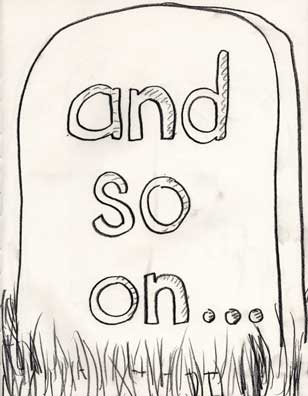
"epitaph"
Lately (as per the previous post), I have had the delight to be in the company of a young person learning to write. Currently she recognizes all the letters and can accurately depict them. Placing those letters in a word-making arrangement is the approaching horizon.
Watching her practice, provides a reminder that handwriting is drawing. Before written words can convey meaning an image must be constructed. Learning to master handwriting is an early, formative experience of what we might call "realistic drawing." The instructive irony, of course, is that making marks that register as words - words that only exist in the mind and who's communicative meaning is completely dependent on consensus - is about as abstract as it gets.
Today's posted drawing is an example from an ongoing body of work I refer to as "word paintings."
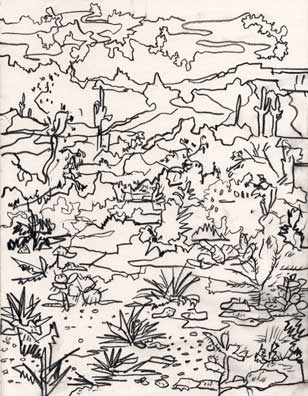
"nearly_show_share"
Today's post is currated by the discerning eye of a four and a half year old. While traveling, I was graciously welcomed into the family home of beloved friends in Pheonix. My prescence there became the pre-school "Show and Share" subject of the family's oldest daughter.
Reports are that "Alice" described me as "an artist who takes walks in the desert and makes drawings." When asked what the drawings look like, her succinct answer, "swirly."
My young friend's presentation resulted in her getting some pre-school homework, namely to see if she might be able to bring in one of those "swirly" drawings to share with the class.
Could there be a more desirable audience than a classroom of 4 year olds? Eyes whose youthful survey is fresh and without judgement. Perception independent of aesthetics.
I did, however, call upon Alice to make a critical assessment: to select which drawing she would like to take to class and show her friends. After removing images that might be regarded as disturbing, I offered her many drawings from which to choose. The above posted drawing drew her immediate and unwavering enthusiasm. "That's the one I want to take to school," she said.
The piece is unique in the works I showed Alice in not featuring a human figure, and is easily the most representational drawing I made during my stay in Pheonix (possibly the most representational drawing I've made in 15 years!). It could, essentially, be the view out the back of her family's home. (Actually, I made it sitting across from the Convention Center in downtown Phoenix.)
Addendum: Happily, I can report that, in today's unveiling, the drawing earned winning approval for itself and its presenter. In fact, the story may well continue, for the teacher plans to make photocopies of the drawing for the kids to color and then send to the "artist."
I'll keep you apprised.
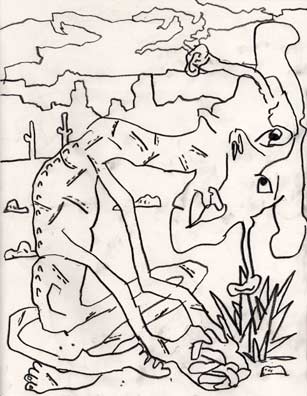
"wiped_homespun_Sedona"
Tucked away in the U.S. Forest Service guide for Red Rock Country, Coconino National Forest and Sedona, Arizona is a reference to a Northern Arizona University survey which found in a recent year that 64% of those visiting the area came seeking a spiritual experience of some sort. Sedona's towering wind and rain sculpted rock formations annually receive four million visitors - “a large number considering the prime attraction is rust,” quips the guide. (The rocks contain iron oxide which through exposure to the elements over millions of years has oxidized, giving the stone its signature blazing orange cast.)
Laid down in the Paleozoic Era, the rock formations of Sedona are the remains of what was once the bedrock upon which the first terrestrial life forms put down roots. As those plants and amphibians ascended, the land undergirding their development slowly surrendered to countless eons of relentless wind and rain – a process of pure creative destruction resulting in the fantastic forms remaining at this moment.
For visitors, the lure is a landscape whose beauty is a function of its decay. This is in striking counterpoint to the situation in the valley where surging urban development is creating a new environment and even newer decay. Like history’s greatest tsunami, humans are, in effect, accelerating the impact of countless eons of weather.
In the same way that one could think of the Red Rocks as the infrastructure upon which terrestrial life built its paradise, so the human development which now fills Sedona’s valley, climbs its mountains and - come to think of it - encircles the globe is the infrastructure suited to our perceived needs and purposes. It feels, here, as though humanity is an alighting hitchhiker saying to the undergirding rocks, “thanks for the ride, but we’ll take it from here.”
Where will this unprecedented endeavor deliver us? How can we successfully negotiate the shoals to escape catastrophe and emerge as richer, wiser, worthy heirs of our earthly progenitor?
Perhaps an answer lies with that 64% who visit Sedona in quest of spiritual experience.
The rise of art making as a human activity (truly a new thing under the sun) dates to about 40,000 years ago. Its appearance is an event that, not coincidentally, roughly coincides with the emergence of the first deleterious impacts of human activity on the environment – for example the hunting to extinction of certain large mammals.
Perhaps the making of art is an evolutionary adaptive response fashioned to re-inject beauty and meaning into a world suffering from human-induced environmental stress. The ongoing genius revelation of our art-making ancestors is that creativity is the ultimate renewable resource.
To the extent that access to the beauty and sustenance of the natural world diminishes, the need for beauty and its orienting connection to awe increases in proportion - awe being the healthy default of human nature. As human activity compromises the inherited beauty of the natural world, we find it biologically incumbent to create beauty from that nature which remains available to us: our own.
From this perspective, those spiritual seekers drawn to Sedona come as nascent artists efforting under the tutelage of the land’s unfathomable beauty to turn yearning into healing.
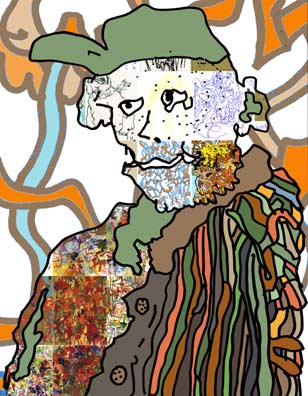
"so, so very what"
Stephen Jay Gould, and his zoologist colleague, Dr. Richard Lewontin, once famously proposed that the architectural structure known as a spandrel is an apt metaphor to explain certain features of evolution. The notion of a spandrel, they suggest, is applicable to structures exhibited by an organism which appear to confer no adaptive benefit. The authors maintain that it is a fallacy to attribute a purpose to every structure an organism manifests.
In a seminal essay, they conclude that the cathedral builders of old, after satisfying the engineering required to construct a cathedral's arches and domes, were left with unavoidable but structurally nonessential spaces, eventually known as spandrels. (Flat wall space created between two adjacent arches is one example).
In biological terms, one especially flamboyant example of a spandrel would be the male peacock's tail. This is nonessential in the extreme. Its size, weight and lack of utility imperil the bird's well-being and survival. Yet, the glorious tails are not eliminated by selective pressure because peacock hens, presumably, get the hots only for the most extravagantly gorgeous plumage.
It would appear that Beauty is the strange attractor of peacock evolution. Viewed this way, the survival of the peacock is the story of a genome in service to Beauty as an end.
The cathedral builders of Europe filled their spandrels with mosaics, frescoes and sculpture. What if the cathedral were thought of as a mere container for said mosaics and frescoes? Viewed this way, the architecture of the cathedral becomes an ingeneous adaptation arrived at in order to provide an opportunity for art to thrive. Beauty is the strange attractor.
The modern age might well turn out to be the artistic equivalent of the Cambrian Explosion - that era of volatile expansion about which Gould so lovingly wrote in his book, "Wonderful Life." Maybe the eruption of various innovative artistic practices in the 20th century - the avante garde, technological innovation, populism - parallel, in our own way, that grand epoch when Mother Nature was furiously at work creating the torrent of experimental forms which (530 million years later) would give us this world enriched with peacocks, cathedrals and theoretically-inclined biologists.
Art rises to fill the non-essential with Beauty and in so doing eliminates the very notion of irrelevance.
There are ripening spandrels aplenty in the artistic practice of our time: neo-paganism, virtual community and sustainablity. The selective pressures of environmental stress, commerce and mediated lcd (lowest common denominator) are accute. Yet, Beauty as guiding imperative remains unassailable.
The just concluded Terry Winters exhibit at Matthew Marks' 22nd Street gallery was one of those great shows that provides a glimpse of a penetrating artist deeply engaged in the incorporation of new vocabulary and exploration in general.
Many of the works feature the imagery of film strip sprocket holes running across the surface. This depiction seems analogous to Winters' signature imagery of biological cells, but here the shapes imply absence (they're holes after all). The notion of a film strip suggests a sequence of projected images moving past. Intriguingly, the paintings without the explicit slide frame reference have forward planes of biological images that viscerally seem to scroll across the surface in various directions - the film strip is in motion. For genealogcal purposes it would be interesting to learn the sequence in which these paintings were completed.
Topographical maps, stained biological slides, oscilloscope plottings and the aforementioned film strip are a few of the motifs. This raises the question, "What is the scale one is looking at?" Larger than life (there's a phrase to think about) by many magnitudes seems to be the case with most of the works, but some of the fields that consist solely of linear waves, warps and wefts, devoid of floating objects, hint at vast spaces, or (and I'm out on a limb here) psychic portraits. The abstract has become representational, or, if you prefer, the representational has become abstract.
The works deploy a sophisticated game-playing strategy, setting up a system or equation and letting it run. There is a liberation in this way of working that is as palpable on the gallery wall as it, no doubt, is in the studio.
Tacitly circumscribing painterly options allows expression, quirk and randomness to gather by default in the gaps and collapses in the system, thereby drawing attention to themselves. The hand in these paintings is intense, human and stirring of gratitude. Consisting of the incremental accumulation of an innumerable, yet seemingly calculable, number of strokes and decisions, Winters' work, among its many other accomplishments, succeeds in short circuiting its own imagery, becoming a field of communicative touch.
It comes as a happy congruence of fate that after years of residing in the exploratory phase, the launch of tinsquo.com shares its inauguration with the 100th anniversary of the Wright Brothers' first flight. As a native Daytonian, I grew up in a cultural mileau that told a story where Orville and Wilbur were as Greek gods. Their lives form the defining, shared understanding of what makes the Miami Valley a special place from which to hale. As I'm sure is the case with many people who grew up in Dayton, it did not escape my notice that the Wright Brothers' bicycle shop on West Third St. was as unpresupposing in its day as a contemporary suburban tract house seems in our own. It was an unquestioned thought process of my youth to assume that dwelling within any given house might be a mind at work on some fantastically visionary project destined to change the world. (This, in fact, is not altogether delusional. Dayton has produced an inordinate number of inventors.)
I long ago left the Gem City, but I didn't leave behind the idea that in the nurturance of visions reside the meaning of life. For twenty years, I've been engaged in the practice of painting, trying to do something, something real and impactful. My aesthetic foundation and initial inspiration came from the New York School Abstract Expressionists. Their revelation that process is content guides my work and, in fact, is the principal to which tinsquo is dedicated.
With this site I aim to share the forward edge of my painterly process, to share the traditionally private or inward pursuit of surprise. This is, of course, really the most interesting thing about painting and art. The Web holds the promise of revealing what happens behind closed doors in the remove of the studio and, in so doing, alters what we perceive as valuable and invites others to their own artistry.
One hundred years ago, Orville Wright jumped off a sand dune and in a sense he still hasn't landed. While banking into the wind it's unlikely he was thinking of lunar landings and Hubble telescopes. Most likely he was just hoping not to break his neck and how to improve on the next flight. One thing's for sure, though; my Daytonian forbearers were not bound by the status quo. Their lives would seem to be a refutation of the very notion of a status quo. In a universe of unbound possibilities, we invent the world moment by moment. Invention is human nature. Hence the name of this website, tinsquo -- short for There Is No Status QUO. Welcome.